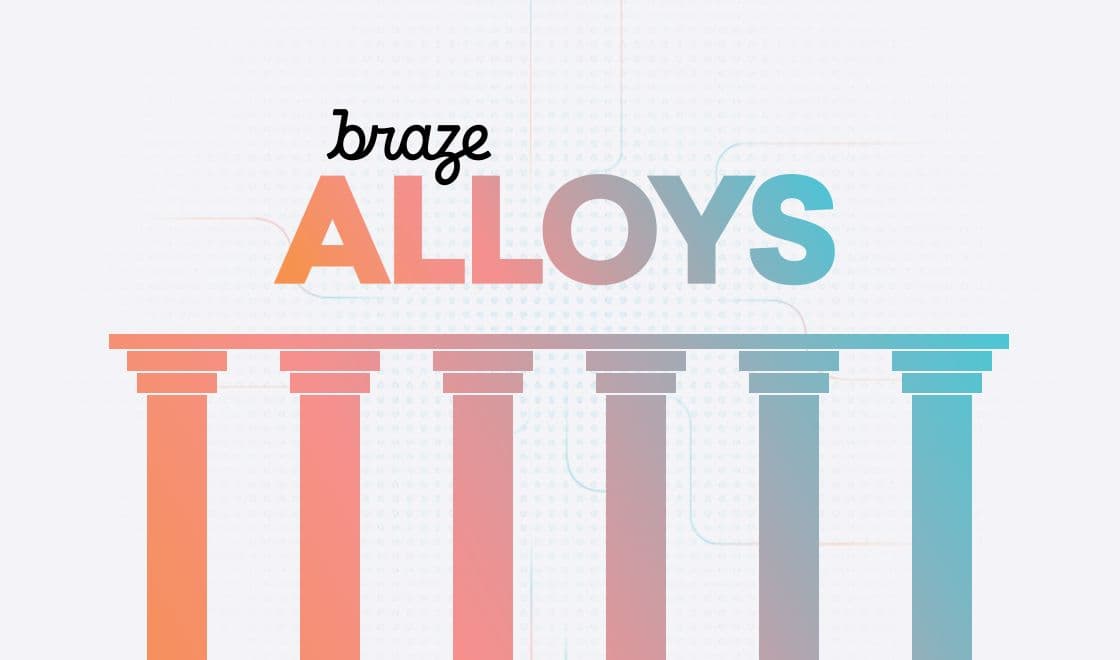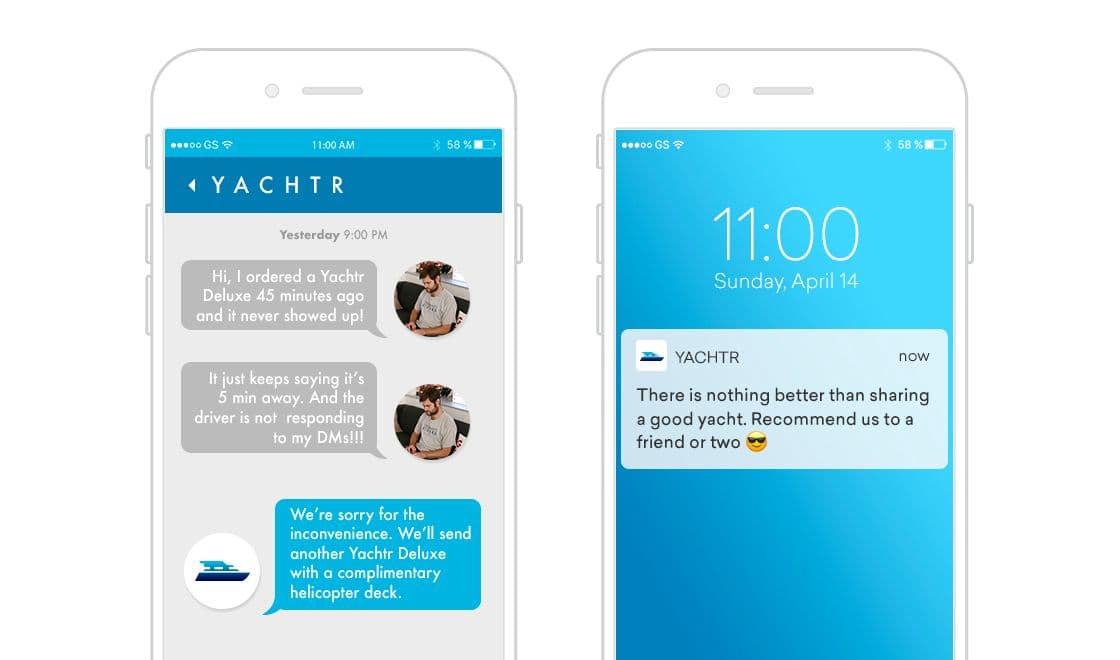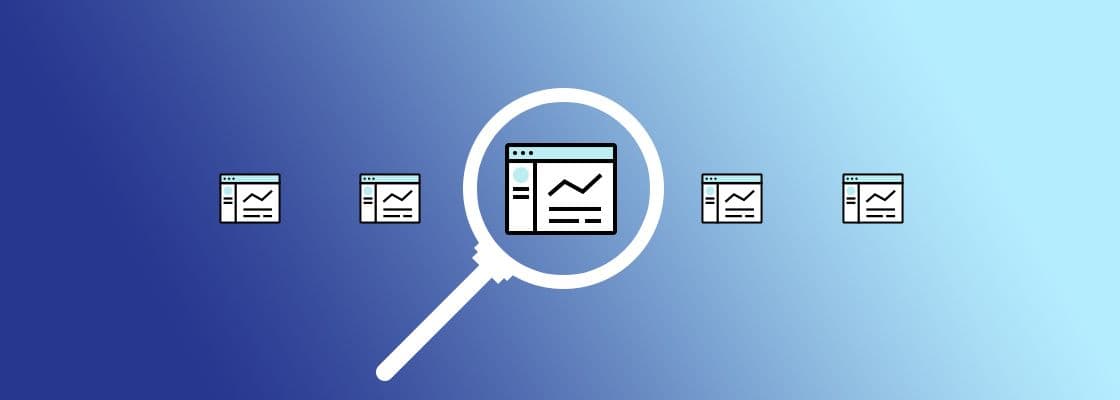Building the Next-Gen Ecosystem: How the Six Pillars of Braze Alloys Support True Connected Engagement
Published on May 11, 2019/Last edited on May 11, 2019/15 min read


Matt McRoberts
SVP, Global Alliances at BrazeYour customers are individuals, with their own individual interests, preferences, and behaviors. And even as a group, they’re unique—sure, some customers may overlap with your competitors’ audiences, but many of them won’t—and that means they need to be approached in custom-fit ways.
To do that, you need the right tools. But more than that, you need to ensure that you have the right technology ecosystem—one that allows you to slot in best-in-class technologies for all your different customer engagement needs and to connect them together to support responsive, relevant, and deeply human brand experiences.
Last year, we launched Braze Alloys, as part of an effort to make the process of creating a bespoke customer engagement ecosystem easier and more impactful. Built on the back of our Braze Currents real-time data streaming feature, Braze Alloys allows our customers to coordinate their use of Braze with a wide (and growing!) range of technologies (via direct integration, API, and webhook) to support highly personalized, highly effective brand experiences at scale.
Ecosystems are so central to successful marketing efforts today that it can be easy to forget they’re a relative newcomer to the customer engagement space. To get here, we had to move past years of big claims and vaporware from entrenched tech incumbents. Now it’s truly possible to tie together top-flight technologies—customer engagement platforms, analytics solutions, customer data platforms (CDPs), and more—in an effective way to support brilliant experiences for consumers.
It’s been a journey. For brands, the better you understand that journey and what’s possible now, the easier it’s going to be to ensure that you’re creating and maintaining a first-class technology ecosystem that can support the kinds of experiences your customers crave.
The Rise of the Built-For-Purpose Ecosystem
As a concept, all of this has been in the air for quite some time. Microsoft was one of the first on the scene when it launched its Microsoft Office suite back in 1990, bundling a collection of business software products into a cohesive whole. The big marketing clouds were some of the first ones to say, “You know what, let’s move all of this stuff into the cloud.” But their cloud-based software as a service (SaaS) offerings were still basically just suites. That is, owned by a single company, and the systems they oversaw made it difficult—if not impossible—to effectively share data and coordinate campaigns and other actions with solutions offered by other companies.
The rise of technologies like APIs that allow for greater data agility and stream processing tech like Kafka that make fast, continuous data management possible allowed digital-first brands like Lyft and Deliveroo to gather customer-related data from different platforms and channels across the full range of digital touchpoints, curate that data, glean learnings about each customer’s behavior and preferences, and then act on those insights to provide relevant and responsive brand experiences. People had been talking about ecosystems forever, but this was the first time that real, heterogeneous technology ecosystems for customer engagement really started springing up, instead of just cloud-based suites from Salesforce and others that billed themselves as an all-in-one ecosystem.
We’re now seeing a market-wide acceptance of the idea that built-for-purpose tech ecosystems are the way forward, and a key part of digital transformation. The days of agencies and consultancies building billion-dollar practices on top of stand-alone marketing clouds are on the way out. Now, instead of focusing on how to make a poorly architected all-in-one solution work for their clients, they’re saying, “Hey, we need to help them put together a technology ecosystem that fits their needs and lets them speak to their customers.” That’s a seismic shift.
Today’s Ecosystems: Next-Gen Solutions for a Next-Gen World
Modern consumers have been meticulously trained by the Ubers and Airbnbs of the world to expect brand experiences that are delivered in the moment and that put their needs and wants at the center. To deliver on that expectation, it’s essential for brands to choose the right technologies and to ensure that these solutions can work together as part of a cohesive ecosystem to support cohesive experiences for their audiences.
Making that happen is a process, and requires serious thought and care. Plenty of brands set out to build a best-in-class ecosystem for themselves and end up with a Frankenstein’s monster of a stack, with nothing working quite as well as it should. To succeed, you need to make sure you’re foregrounding these key goals:
(1) Your technology ecosystem should support true data agility
Modern customer engagement is built around data. To succeed today, brands need to be thoughtful about what information they’re collecting and ensure that they have the technology they need to successfully track and process that data. But while you’d be foolish to have a marketing program that neglects the data side of things, just having the right data isn’t enough. If you collect it and don’t have a technology ecosystem that makes it easy to act on that data to reach your customers in responsive, meaningful ways, you’re making a costly mistake.
Data—especially customer-generated, first-party data—is incredibly valuable to your customer engagement efforts, but that value begins to degrade with every second that passes. If it takes your company hours or even days to move high-value information between systems and teams, you may miss your window and find yourself sending messages that are confusing and useless, instead of relevant and impactful. It’s the difference between sending an abandoned cart email ten minutes after a customer leaves your website without buying versus sending that same message two weeks later, when they may well have already bought from somebody else.
Data agility makes it possible to avoid these painful situations by ensuring seamless, in-the-moment communications between all the different technologies and systems that make up your ecosystem. But you can’t make that kind of real-time data management a reality if you’re investing in systems that can’t talk to each other.
(2) Your technology ecosystem should enable a coherent, cross-platform, cross-channel brand experience
Customer engagement today is about more than just marketing. Consumers don’t care which one of your company’s internal teams owns which part of your digital experience—they just want that experience to be relevant to their interests, customized to them as individuals, and coherent, no matter where they choose to engage. If you have siloed systems (and siloed teams, for that matter) you’re significantly increasing the chances that you’re delivering experiences to your customers that they don’t want.
We’ve all had it happen to us. You have a negative experience with a brand and take some action—file a customer service ticket or an official complaint—only to have that very same brand start blanketing you with ads on every site you visit, or send you messages asking you to make a purchase or fill out a NPS survey. It’s annoying, it tells you that the brand isn’t seriously invested in understanding you as an individual, and it makes it more likely that you’ll give their competitors a second look. Needless to say, that kind of disconnected experience is exactly the sort of thing that every brand needs to be serious about avoiding.

The technology landscape is only becoming more complex. Customer experiences are everywhere, and as the number of technologies and platforms keep growing, the number of places you can gather data about customer preferences and serve up relevant customer experiences keeps growing, too. These experiences could be customer support interactions or marketing messages; they could be advertisements or actual product experiences that are built into your brand’s website or app. But whatever they are, you have to be mindful of them, and make sure that the technologies underlying them can communicate with the rest of your customer engagement stack.
The only way to ensure data agility and a holistic brand experience in a world increasingly defined by always-on technologies and ambient computing is to ensure that you have an ecosystem that can support information processing and customer engagement everywhere your customers engage. It takes work and care and the right collection of solutions, but it’s achievable today...and worth the investment it takes.
Braze Alloys: The Six Pillars of Connected Engagement
From the beginning, we’ve architected Braze in ways that allowed it to play nice with other systems and technologies. We think that the data Braze can collect and action on is central to successful customer engagement—and to get the full value of it, brands need to pipe the information and insights that Braze makes possible throughout their ecosystem to create a timely, seamless feedback loop.
But as the number of related technologies has increased we realized it wasn’t enough just to support real-time data flows with other technologies; we needed to make it easier for marketing, growth, and engagement teams to take advantage of those capabilities. Enter Braze Alloys, a major evolution of how the Braze platform interacts with other technologies. The Braze Alloys hub lays out six major categories of technologies that work effectively with Braze to support better customer experiences, and curates best-in-class solutions for each one.
With Braze Alloys, it’s easier than ever before to design a technology ecosystem that’s perfect for your business and its unique needs—and capable of supporting the connected experiences that today’s consumers crave. So let’s take a look at the six technology categories that make up Braze Alloys and how Braze customers are using each of them to better serve their customers.
1. Data & Infrastructure Agility

When it comes to customer engagement, data is at the heart of everything. And with Braze Alloys’ Data & Infrastructure Agility category, we’re making it easier to link up the Braze customer engagement platform with a variety of data-related technologies, including:
- Data Warehouses (like Amazon S3, Microsoft Azure, Google Cloud, and Snowflake)
- Wrapper SDKs (like Apache Cordova and React Native)
- Customer Data Platforms (like mParticle, Segment, and Tealium)
Those connections make it possible for marketing, growth, and engagement teams to better manage their data, supporting better outcomes for Braze customers and their customers alike.
“At Flipp, our goal is to ensure that every user interaction provides value and delivers on our mission to help our consumers save time and money on their weekly shop,” said Colleen Garrity, team lead, growth marketing at Flipp. “Smart marketing strategies that reflect the needs and preferences of our users are critical to engagement. To help drive this, Segment offers a seamless connection between the campaigns we run in Braze and our business intelligence tools, helping to democratize data and making it easily accessible to our teams. The simple integration of the platforms enables our team to pivot to optimize campaign performance and connect with our users in the best way.”
2. Insights

Understanding your customers is essential in today’s cross-platform, cross-channel, always-on digital world. Braze Alloys’ Insights category is designed to help brands get there by supporting stronger connections between Braze and a variety of analytics technologies, including:
- Behavioral Analytics Platforms (like Amplitude and Mixpanel)
- Crash Analytics Solutions (like Apteligent)
- Business Intelligence Technologies (like Looker)
Seamless connections between Braze and insights-focused technologies can deliver a deeper understanding of your audience, as well as more effective outreach. “Using Braze together with Amplitude helped us move faster and turn our emails and messaging into a channel that drives growth in our KPIs,” said Michelle Huang, email and messaging lead at design and publishing platform Canva. “Braze was a solution that didn’t overcomplicate our analysis, and more importantly, our ability to measure impact.”
“As a marketer one of the biggest things you need to be able to do is measure the effectiveness of your campaigns and follow the users journey,” said Keana Noons, marketing manager, consumer products at fitness and wellness platform MINDBODY. “Not too long ago, we added the Amplitude Currents connector through Braze and it has been a game changer! Being able to create the cohort we want to target, automatically sync that to Braze, launch the desired campaign then go back into Amplitude to further analyze is imperative.”
With Braze Alloys, you’re not locked into a single insights platform just because you want to leverage the Braze customer engagement platform—it’s all about finding the technologies that work best for your brand’s unique needs, and leveraging them in concert with Braze to see the best outcomes.
“We always look for deeper integrations among the platforms in our growth stack,” explained Emma Yu, senior product marketing manager at Microsoft’s MileIQ mileage tracking platform. “Mixpanel is our main analytics tool and Braze is our core engagement platform. They are definitely better together. The two-way synchronization integration allows us to incorporate engagement experience in users’ activity history and provide a holistic view of the user journey…[and] use Mixpanel as a source for data enrichment in Braze.”
3. Channel Extensions

Direct customer messaging is one of the most effective ways to increase audience engagement, especially if you leverage multiple outreach channels. Braze Alloys makes it easy to make the most of each channel by allowing Braze to work in concert with a variety of technologies that can extend those channels impact or reach, including:
- A/B Testing Software (like Apptimize)
- Email Deliverability Technologies (like 250ok and ReturnPath)
- Email Orchestration Platforms (like Stensul and Mail Bakery)
- Localization Solutions (like Transifex)
- Workflow Automation Technologies (like Zapier)
“Global marketing teams require global marketing solutions, and localization is one of the biggest challenges they have to face,” said Scott Dzialo, director of customer success, enterprise and strategic accounts at Braze. “While it's difficult enough building the perfect messaging flows for your various personas, adding in the nuances of language differences to your copy can feel overwhelming. Transifex allows Braze customers to quickly and easily pull in the exact right copy for the exact right market, taking out some of the pain of localizing all of your messages to your global user base.”
4. Additional Channels

There are a lot of messaging channels out there—from email to mobile messaging options like push notifications and in-app messaging to web channels like web push and in-browser message—but sometimes a brand needs something more to reach their customers in valuable responsive ways. That’s why Braze Alloys supports using Braze in connection with a number of additional messaging channel solutions, including:
- Direct Mail Services (like Inkit and Lob)
- SMS Solutions (like Twilio and TeleSign)
- Instant Chat Platforms (like Facebook Messenger)
“While many of today’s top brands focus almost exclusively on digital marketing, there’s still a lot of industries where classic mailers and flyers are an essential part of the outreach mix,” said Dzialo. “In particular, local marketing groups and small businesses find that physical mailers are still one of the best ways of engaging with their communities. Inkit and Braze's combined powers allows you to get the best of both your digital and physical marketing worlds. With Braze as the orchestration layer, Inkit can send all sorts of physical mail to your end users. This messaging combined with your digital communications ensures you're reaching all of your customers across all of their touchpoints, creating a truly holistic discussion with your users.”
5. Data Augmentation

For some brands, really understanding and speaking to their customers requires them to leverage first-party engagement data in concert with other information in order to enrich the brand experiences and messaging campaigns they’re providing. With Braze Alloys, you can complement the data that Braze collects with additional information provided by other technologies, including:
- Contextual Information Platforms (like Factual, Radar, Neura, and Foursquare)
- Recommendation Engines (like Certona and LiftIgniter)
“Partnership with Braze and Radar has empowered our team to send personalized offers at the exact point of purchase,” said Maddie Groves, associate marketing director, communications at cashback rewards platform Ibotta. “By meeting our users where they physically are, Ibotta is able to help make every purchase rewarding.”
6. Advertising Technologies

If paid advertisements are part of your brand’s awareness or acquisition strategy, the information you gather during your efforts shouldn’t sit in a silo, collecting dust—it should be used to support a fuller view of every impacted customer. With Braze Alloys, we make it easier to square that circle by connecting with advertising technologies, including:
- Attribution Platforms (like Adjust and Appsflyer)
- Deep Linking Solutions (like Branch)
- Social Media Technologies (like Facebook)
- Retargeting Software (like Remerge and Inmobi)
"Marketers need to deliver relevant, personal messages to their consumers and Braze enables that to occur across all relevant mobile channels. Together with Branch, we can help ensure those messages deliver optimal user experiences and lead to better business outcomes," said Eric Stein, EVP at Branch. "Together with Braze, we have dozens of clients benefiting from our integration who understand that it is not enough to just measure the downstream impact of your marketing activities when you can improve the performance of those activities as well."
Final Thoughts
Less than a year after its launch, Braze Alloys represents a robust collection of nearly 50 technologies, all of them carefully selected to help brands fill critical gaps in their customer engagement strategy and support the creation and maintenance of a best-in-class, built-for-purpose technology ecosystem.
No one ecosystem will be right for every brand or every strategy, and keeping up with the evolving technology landscape and shifting customer expectations and tastes will often mean adjusting the solutions your team leverages to fit your current needs. Make sure your have a tech ecosystem that can grow and change with your customers and business.
To learn more, explore our Braze Alloys hub and start the journey toward true, connected customer experiences.
Related Tags
Be Absolutely Engaging.™
Sign up for regular updates from Braze.
Related Content
View the Blog
The new inbox reality: How iOS changes are reshaping email marketing

Aparna Prasad

Experience optimization: Turning data insights into better journeys

Team Braze

December 2025 Bonfire Marketer of the Month: Jagex’s Emma Oliver
